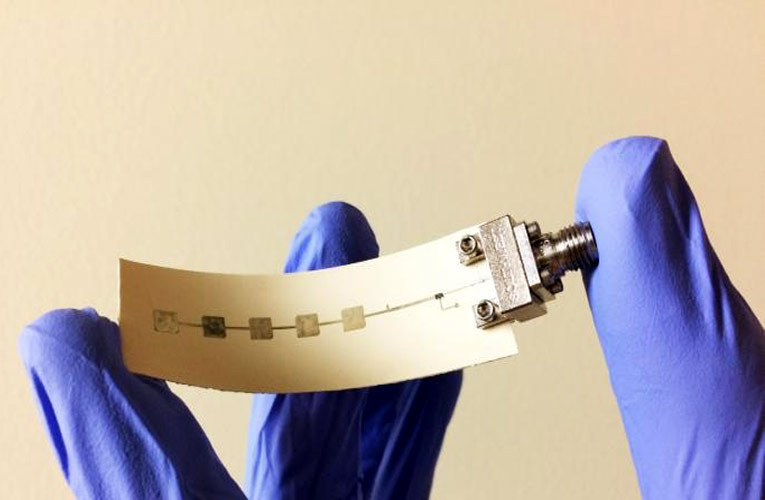
With the advent of 5G IoT networks, the need for scalable and robust communication systems to deliver drastically high data rates and low power consumption has risen. Backscatter radios or passive sensors in which wireless communication is achieved via reflection rather than radiation is a low-complexity approach that requires a minimal number of active elements. The major concern with the Backscatter radios is that they are typically limited to data rates of hundreds of megabits per second because of the low-frequency bands used and the modulation techniques involved.
Using a backscatter radio for gigabit-data rate mmWave communications, researchers at the Georgia Institute of Technology, Nokia Bell Labs, and Heriot-Watt University have tried to minimize the front-end complexity to a single high-frequency transistor. The research was collaborated by Apostolos Georgiadis and Spyridon Nektarios Daskalakis, former visiting professors at Georgia Tech.
The team has come up with a low-cost solution for backscatter radios to support high-throughput communication and 5G-speed Gb/sec data transfer using only a single transistor. The backscatter breakthrough that runs near-zero-power IoT communicators at 5G speeds everywhere with a unique modulation approach in the 5G 24/28 Gigahertz (GHz) bandwidth ensures safe and robust transfer of data from virtually any environment.
As put in by the team, this breakthrough can communicate over 5G/millimeter-wave (mmWave) frequencies without actually having a full mmWave radio transmitter. Adding to this, Ioannis (John) Kimionis, a Georgia Tech Ph.D. graduate who is also a member of technical staff at Nokia Bell Labs said “Lower operating frequency keeps the electronics’ power consumption and silicon cost low. Our work is scalable for any type of digital modulation and can be applied to any fixed or mobile device.”
For scaling up the data rate without adding more transistors to the modulator, the researchers kept the same RF front-end thereby making it a scalable communicator. The technology was demonstrated using a specialized Rotman lens that collects 5G electromagnetic energy from all directions opens up a host of IoT 5G applications, including energy harvesting.

